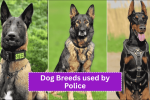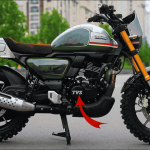
When it comes to protecting your home and family, nothing compares to the natural instincts and unwavering loyalty of a well-trained watchdog. Throughout history, certain dog breeds have distinguished themselves as exceptional guardians, combining intelligence, strength, courage, and an innate protective nature that makes them ideal for home security purposes. These remarkable canines don’t just serve as deterrents to potential intruders; they become beloved family members who form unbreakable bonds with their owners while maintaining their vigilant watch over the household.
The decision to bring a watchdog into your home involves careful consideration of various factors including your living situation, family composition, experience with dogs, and specific security needs. Unlike regular family pets, watchdogs require specialized training, consistent socialization, and owners who understand their unique temperament and requirements. The investment in time, training, and commitment is substantial, but the peace of mind and security these dogs provide is invaluable.
Modern home security often combines technological solutions with the irreplaceable instincts of a well-trained watchdog. While security cameras, alarms, and smart home systems provide excellent monitoring capabilities, they cannot match the intelligence, adaptability, and immediate response of a living guardian who can assess situations, make split-second decisions, and take appropriate action to protect the family.
The breeds featured in this comprehensive guide represent the pinnacle of canine protection, each bringing unique characteristics that make them exceptional guardians. Many experts recommend German Shepherds as the gold standard for family protection, being highly trainable and used extensively in police and military work. However, each breed offers distinct advantages that may make them perfect for specific situations and family needs.
1. German Shepherd: The Ultimate All-Around Guardian
German Shepherds are one of the most common breeds for police dogs and represent the gold standard for K9 units due to their strength, agility, fierce loyalty, and exceptional intelligence. These magnificent dogs typically stand 24-26 inches tall and weigh between 50-90 pounds, presenting an imposing figure that naturally deters potential threats while maintaining the gentle temperament necessary for family life.
What sets German Shepherds apart is their remarkable ability to assess situations and respond appropriately. They possess an almost uncanny ability to distinguish between normal visitors and potential threats, making them invaluable for families who frequently have guests. Their intelligence allows them to learn complex commands and behaviors, making them highly adaptable to various security needs and family situations.
German Shepherds require consistent mental and physical stimulation to prevent boredom and destructive behaviors. They thrive on having jobs to do, whether it’s patrolling the property, learning new commands, or participating in family activities. Their double coat requires regular grooming, and they shed considerably, particularly during seasonal changes.
The breed’s loyalty is legendary, often forming stronger bonds with their primary handler while remaining protective of the entire family. This characteristic makes them excellent for families with children, as they naturally assume a protective role over younger family members. However, their protective instincts must be properly channeled through training to prevent overprotectiveness that could interfere with normal social interactions.
2. Rottweiler: The Powerful Protector
Rottweilers are muscular dogs with black coats and tan markings who are good-natured, obedient, loyal, and calm, making excellent watchdogs because they are naturally wary of strangers and have a strong desire to protect their homes. These impressive dogs typically weigh between 80-135 pounds and stand 22-27 inches tall, presenting a formidable presence that few would dare challenge.
Originally bred as cattle herders and guardians, Rottweilers possess an innate understanding of territorial protection. They are naturally suspicious of strangers but not aggressive without cause, making them excellent judges of character and situation. Their calm demeanor around family contrasts sharply with their alertness and readiness to defend when necessary.
Rottweilers require early socialization and consistent training to ensure they develop into well-balanced protectors rather than overly aggressive dogs. They respond best to confident, experienced handlers who can establish clear leadership and boundaries. These dogs are not suitable for first-time dog owners due to their size, strength, and need for experienced handling.
The breed’s exercise requirements are moderate but consistent. They need daily walks, playtime, and mental stimulation to maintain their physical and psychological health. Rottweilers are prone to certain health issues including hip dysplasia and heart conditions, making regular veterinary care essential for maintaining their protective capabilities.
Their devotion to family is absolute, often forming particularly strong bonds with one primary family member while protecting the entire household. This loyalty, combined with their natural protective instincts, makes them exceptional guardians who will literally put themselves between their family and any perceived threat.
3. Doberman Pinscher: The Elegant Athlete
Dobermans are known for their protective nature and ability to form strong bonds with their families, requiring proper training and socialization to distinguish between normal and threatening situations. These sleek, athletic dogs combine elegance with power, typically weighing 60-100 pounds and standing 24-28 inches tall, creating an impressive silhouette that commands respect.
Dobermans are renowned for their speed, agility, and lightning-fast reflexes, making them capable of responding instantly to threats. Their athletic build allows them to patrol large properties effectively and pursue intruders if necessary. Despite their fearsome reputation, well-trained Dobermans are gentle and affectionate with their families, particularly children.
The breed’s intelligence rivals that of German Shepherds, making them highly trainable and capable of learning complex protection protocols. They excel in obedience training and can be taught to respond to various commands and situations with precision. However, their intelligence also means they require mental stimulation to prevent boredom and potential behavioral issues.
Dobermans have relatively low grooming requirements due to their short coat, but they are sensitive to cold weather and may require protective clothing in harsh climates. They are generally healthy dogs but can be prone to dilated cardiomyopathy and other heart conditions, making regular health monitoring important.
Their natural alertness makes them excellent early warning systems, often detecting unusual sounds or activities long before human family members notice anything amiss. This heightened awareness, combined with their protective instincts, makes them outstanding guardians for homes in both urban and rural settings.
4. Bullmastiff: The Gentle Giant Guardian
Bullmastiffs represent the perfect balance between size, temperament, and protective ability, typically weighing 100-130 pounds and standing 24-27 inches tall. Originally bred to guard English estates, these dogs were specifically developed to detain intruders without causing serious harm, making them ideal for modern family protection needs.
What makes Bullmastiffs unique among guardian breeds is their naturally calm and gentle temperament combined with their impressive physical presence. They are less likely to bark excessively compared to other watchdog breeds, preferring to use their intimidating size as a deterrent. When action is required, they typically use their bulk to knock down and pin intruders rather than bite, making them safer around family members and visitors.
Despite their imposing size, Bullmastiffs are known for being gentle with children and can be quite affectionate with family members. They are naturally protective without being overly aggressive, making them suitable for families who want security without the concerns associated with more aggressive breeds.
The breed requires moderate exercise and is content with daily walks and some playtime. Their short coat is easy to maintain, though they do shed regularly. Bullmastiffs are prone to breathing difficulties due to their flat faces and can overheat easily, making climate considerations important for their health and effectiveness.
Training should begin early to establish control over these large dogs before they reach full size. While generally obedient, their size makes proper leash training and basic obedience essential for safe handling. They respond well to positive reinforcement training methods and form strong bonds with consistent handlers.
5. Belgian Malinois: The Elite Professional
Belgian Malinois represent the cutting edge of modern protection dogs, favored by military special forces, police tactical units, and executive protection services worldwide. These medium-sized dogs typically weigh 40-80 pounds and stand 22-26 inches tall, but their compact size belies their incredible capabilities and drive.
What sets Belgian Malinois apart is their extraordinary work drive, intelligence, and athletic ability. They possess an almost inexhaustible energy level and an intense desire to work, making them exceptional for active families who can provide the mental and physical stimulation these dogs require. Their intelligence allows them to learn complex protection protocols and adapt to changing situations with remarkable flexibility.
Belgian Malinois are not suitable for average families due to their high exercise and mental stimulation requirements. They need experienced handlers who understand working dog mentality and can provide appropriate outlets for their drive. Without proper stimulation, these dogs can become destructive and difficult to manage.
The breed’s protective instincts are strong but well-controlled when properly trained. They are naturally suspicious of strangers but not unnecessarily aggressive, making them excellent for families who need professional-level protection without unpredictable behavior. Their speed and agility make them capable of responding to threats quickly and effectively.
Health-wise, Belgian Malinois are generally robust dogs with fewer genetic health issues than some other guardian breeds. Their short coat requires minimal grooming, and they adapt well to various climates. However, their high activity level means they require regular exercise regardless of weather conditions.
Comprehensive Watchdog Breed Comparison
| Breed | Size (Weight/Height) | Temperament | Training Difficulty | Exercise Needs | Best For | Key Strengths |
|---|---|---|---|---|---|---|
| German Shepherd | 50-90 lbs / 24-26″ | Loyal, Intelligent, Versatile | Moderate | High | Families, All-around protection | Excellent trainability, balanced temperament |
| Rottweiler | 80-135 lbs / 22-27″ | Calm, Confident, Courageous | Moderate-High | Moderate-High | Experienced owners, Property protection | Powerful deterrent, naturally protective |
| Doberman | 60-100 lbs / 24-28″ | Alert, Athletic, Loyal | Moderate | High | Active families, Estate protection | Speed, agility, intelligence |
| Bullmastiff | 100-130 lbs / 24-27″ | Gentle, Calm, Protective | Moderate | Moderate | Families with children, Deterrent presence | Non-aggressive approach, impressive size |
| Belgian Malinois | 40-80 lbs / 22-26″ | Intense, Driven, Athletic | High | Very High | Experienced handlers, Professional use | Elite capabilities, adaptability |
Essential Training and Socialization Requirements
Successful watchdog ownership begins with understanding that these breeds require specialized training that goes far beyond basic obedience. Professional protection dog training typically involves multiple phases, starting with foundational obedience, progressing through protection training, and culminating in scenario-based training that teaches dogs to assess and respond to various situations appropriately.
Early socialization is crucial for all guardian breeds to ensure they can distinguish between normal social interactions and genuine threats. This involves exposing puppies to various people, situations, and environments in controlled, positive ways. Proper socialization prevents the development of fear-based aggression while maintaining natural protective instincts.
Consistency in training and handling is essential, as these intelligent breeds quickly learn to differentiate between family members’ authority levels. All family members should understand basic commands and handling techniques to maintain the dog’s respect and obedience structure.
Legal and Ethical Considerations
Owning a protection dog carries significant legal responsibilities that vary by location. Many jurisdictions have specific regulations regarding guardian breeds, including insurance requirements, registration obligations, and liability considerations. Some breeds face restrictions or bans in certain areas, making research into local laws essential before acquisition.
Ethical ownership involves understanding that these dogs are not weapons but family members with specific needs and characteristics. They require lifelong commitment to training, exercise, socialization, and health care. The decision to own a guardian breed should never be made impulsively or solely based on intimidation factor.
Health and Maintenance Considerations
Guardian breeds often have specific health considerations that potential owners must understand. Large breeds like Rottweilers and German Shepherds are prone to hip and elbow dysplasia, requiring regular health screenings and potentially expensive treatments. Heart conditions affect several guardian breeds, making cardiac monitoring important throughout their lives.
Nutrition requirements for working dogs differ from typical pet dogs, requiring higher protein and calorie content to support their activity levels and physical demands. Quality nutrition is essential for maintaining the health and performance capabilities these dogs need to serve as effective guardians.
Regular veterinary care, including preventive treatments, vaccinations, and health monitoring, represents a significant ongoing investment. Guardian dogs cannot perform their protective functions effectively if they are not in optimal health, making medical care a critical component of successful ownership.
Creating an Effective Home Security Strategy
Integrating a watchdog into your home security strategy requires careful planning and coordination with other security measures. The dog’s patrol areas, sleeping locations, and response protocols should complement existing security systems rather than interfere with them.
Training should include specific scenarios your family might encounter, such as visitors, deliveries, maintenance personnel, and emergency responders. The dog must learn to respond appropriately to various situations while maintaining their protective capabilities when genuinely needed.
Communication between family members about the dog’s training, capabilities, and limitations ensures everyone can work effectively with their guardian. Children particularly need education about their protector’s role and appropriate interactions to maintain both safety and the dog’s effectiveness.
Frequently Asked Questions
Q: At what age should I start protection training for my watchdog?
A: Basic protection training should begin around 12-18 months after foundational obedience is established.
Q: Can guardian breeds be good with children and still be effective protectors?
A: Yes, properly trained guardian breeds can be gentle family pets while maintaining their protective instincts when needed.
Q: How much does professional protection dog training typically cost?
A: Professional protection training ranges from $5,000-$25,000 depending on the level of training and breed.
Q: Do guardian breeds require special insurance or legal considerations?
A: Many insurance companies require additional liability coverage, and some areas have breed-specific regulations to research.
Choosing the right watchdog breed for your family is a decision that will impact your lives for 10-15 years. These magnificent animals offer unparalleled protection and companionship when properly selected, trained, and cared for, making them invaluable additions to families committed to providing the dedication and resources these exceptional dogs deserve.












You managed to roast the system, the culture, and my self-esteem in three paragraphs. — pluscomedy.com